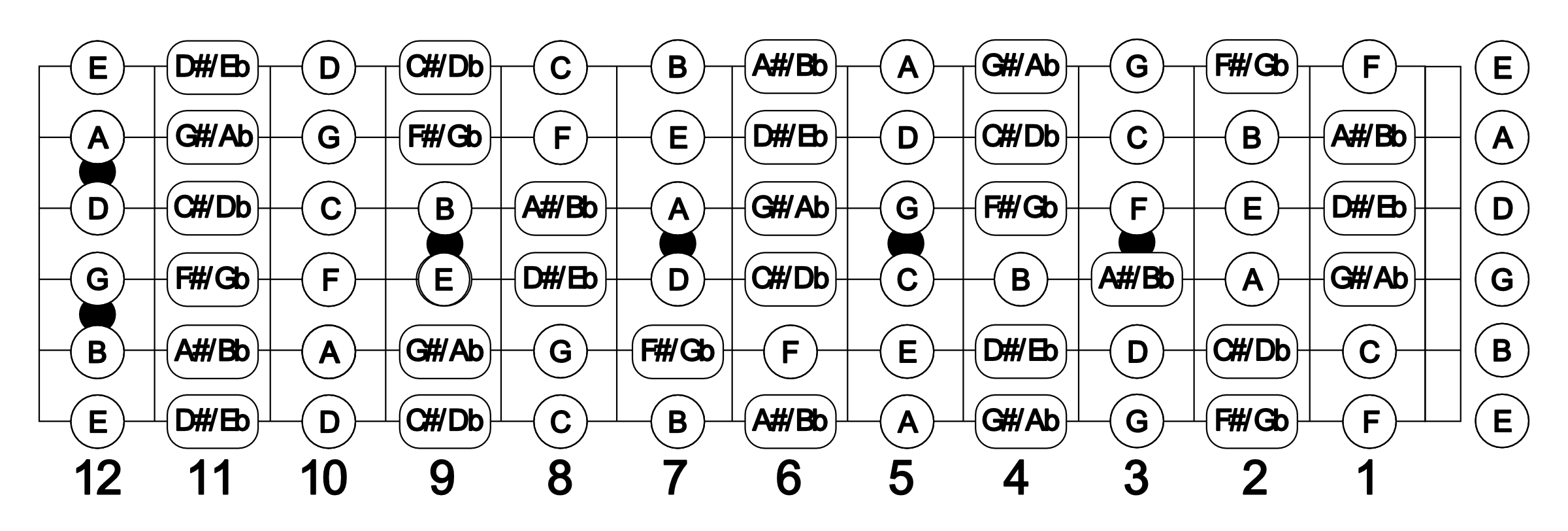Home>Instruments>Guitar>How To Learn Jazz Guitar Techniques


Guitar
How To Learn Jazz Guitar Techniques
Published: February 13, 2024
Learn essential jazz guitar techniques with our comprehensive guide. Master chord progressions, scales, and improvisation to elevate your guitar playing skills. Discover expert tips and tricks for mastering the guitar in a jazz context.
(Many of the links in this article redirect to a specific reviewed product. Your purchase of these products through affiliate links helps to generate commission for AudioLover.com, at no extra cost. Learn more)
Table of Contents
Introduction
Learning jazz guitar techniques can open up a world of musical possibilities, allowing you to express yourself with sophistication and style. Jazz music is known for its rich harmonies, complex rhythms, and improvisational nature, making it a captivating genre for both musicians and listeners. As you embark on your journey to master jazz guitar, you'll delve into a realm where creativity and technical skill intertwine, offering endless opportunities for growth and self-expression.
The art of jazz guitar encompasses a diverse range of skills, from chord voicings and improvisation to fingerstyle techniques and rhythmic intricacies. Whether you're a seasoned guitarist looking to expand your repertoire or a beginner eager to explore the captivating realm of jazz, this comprehensive guide will equip you with the essential knowledge and techniques to elevate your playing to new heights.
In the following sections, we'll explore the fundamental elements of jazz guitar, including essential chords, improvisation and soloing, fingerstyle and picking techniques, learning jazz standards, and developing rhythmic skills. By immersing yourself in these key areas, you'll lay a solid foundation for embracing the nuances of jazz guitar and honing your craft with confidence.
Throughout this journey, remember that mastering jazz guitar is not merely about replicating notes on a fretboard; it's about infusing each melody with your unique voice and interpretation. So, grab your guitar, embrace the spirit of exploration, and let's unravel the captivating world of jazz guitar techniques together.
Understanding Jazz Guitar Techniques
Before delving into the specifics of jazz guitar techniques, it’s essential to grasp the overarching principles that define the genre. Jazz music is characterized by its emphasis on improvisation, harmonic complexity, and rhythmic diversity. When applied to the guitar, these principles manifest in a myriad of techniques that distinguish jazz playing from other styles.
One of the defining features of jazz guitar is the extensive use of extended chords and chord substitutions. Unlike the straightforward chord progressions found in many other genres, jazz often incorporates rich, colorful chords such as seventh, ninth, eleventh, and thirteenth chords. Understanding and mastering these voicings is crucial for capturing the harmonic depth and sophistication inherent in jazz music.
Furthermore, jazz guitarists frequently employ chord-melody playing, wherein they simultaneously articulate chords and melody lines. This technique allows for a seamless integration of harmony and melody, enabling the guitarist to convey complex musical ideas with a single instrument. Additionally, an understanding of chord-scale relationships and modal interchange is pivotal for navigating the harmonic landscape of jazz.
Another hallmark of jazz guitar is the art of improvisation. Jazz improvisation is an intricate interplay of scales, arpeggios, and melodic motifs, all woven together in real-time to create compelling musical narratives. Developing improvisational skills involves internalizing various scales and modes, cultivating a keen ear for melodic phrasing, and honing the ability to spontaneously react to harmonic progressions.
Furthermore, jazz guitar techniques encompass a diverse array of stylistic nuances, including fingerstyle playing, hybrid picking, and the use of jazz-specific articulations such as slides, bends, and trills. These techniques contribute to the distinct tonal palette and expressive capabilities of jazz guitar, allowing players to imbue their performances with nuanced dynamics and emotive resonance.
As you embark on your journey to master jazz guitar techniques, remember that patience, attentive listening, and dedicated practice are key. By immersing yourself in the rich tapestry of jazz music and diligently honing your technical and improvisational skills, you’ll unlock a world of artistic possibilities and elevate your guitar playing to new heights.
Essential Jazz Chords
Central to the harmonic tapestry of jazz music are the essential jazz chords, which form the building blocks of rich, sophisticated harmonies. These chords, characterized by their extended and often altered tones, contribute to the lush and complex soundscapes that define the jazz genre. As a guitarist delving into the world of jazz, mastering these fundamental chord voicings is paramount to capturing the harmonic essence of the style.
Seventh chords serve as a cornerstone of jazz harmony, infusing compositions with a sense of tension and color. Dominant seventh, major seventh, minor seventh, and minor-major seventh chords are prevalent in jazz, each carrying its own unique tonal flavor. Additionally, extended chords such as ninth, eleventh, and thirteenth chords further enrich the harmonic palette, providing a sense of depth and sophistication to chord progressions.
Furthermore, jazz guitarists frequently employ chord voicings that incorporate tensions and alterations, such as the dominant seventh flat ninth and dominant seventh sharp ninth chords. These altered tensions introduce dissonance and harmonic tension, adding a compelling edge to the chordal landscape. Understanding the theoretical underpinnings of these alterations and integrating them into your playing is essential for authentically capturing the jazz sound.
One iconic jazz chord voicing is the “drop 2” voicing, a technique wherein the second-highest note of a four-note chord is dropped by an octave, resulting in a harmonically rich and sonically balanced voicing. This approach lends itself to smooth voice leading and a lush, full-bodied sound, making it a staple in the jazz guitarist’s repertoire.
Moreover, the concept of chord-melody playing, wherein the guitarist simultaneously articulates chords and melody lines, is integral to jazz guitar performance. This technique allows for a seamless integration of harmony and melody, enabling the guitarist to convey complex musical ideas with depth and expressiveness.
By immersing yourself in the study of essential jazz chords and their various voicings, you’ll lay a solid foundation for navigating the harmonic intricacies of jazz music. Through dedicated practice and attentive exploration, you’ll cultivate a nuanced understanding of jazz harmony and elevate your guitar playing with the rich, evocative sounds of jazz chords.
Improvisation and Soloing
At the heart of jazz guitar lies the art of improvisation, a dynamic and expressive form of musical storytelling that empowers the guitarist to spontaneously create melodies and harmonies within the framework of a composition. Mastery of improvisational techniques is essential for capturing the soulful essence of jazz and infusing performances with individuality and spontaneity.
Central to jazz improvisation is the understanding of scales, modes, and arpeggios, which serve as the melodic and harmonic vocabulary for spontaneous expression. Familiarity with scales such as the major scale, melodic minor scale, and various modes, including Dorian, Mixolydian, and Lydian, provides the improvising guitarist with a diverse palette of tonal colors to draw from.
Furthermore, the concept of guide tones, which are the essential chord tones (root, third, fifth, and seventh) that define the harmonic quality of a chord, serves as a navigational tool for crafting melodic lines that reflect the underlying chord progression. By emphasizing guide tones within improvisations, the guitarist can create melodic lines that resonate harmonically with the accompanying chords.
Additionally, the mastery of arpeggios, which are the individual notes of a chord played sequentially, facilitates melodic fluency and structural clarity during improvisation. Arpeggios are invaluable tools for outlining chord progressions and constructing compelling melodic phrases that align with the underlying harmony.
Moreover, jazz guitarists often incorporate chromaticism, which involves the use of non-diatonic (outside the key) notes, to infuse their improvisations with expressive tension and resolution. This chromatic approach adds depth and complexity to melodic lines, contributing to the captivating and unpredictable nature of jazz improvisation.
When it comes to soloing, the art of phrasing and storytelling through melody is paramount. Crafting compelling solos involves the development of melodic motifs, rhythmic variation, and dynamic contour, allowing the guitarist to convey a sense of narrative and emotional depth through their improvisations.
By immersing yourself in the study of improvisational techniques and embracing the spirit of spontaneous creativity, you’ll unlock the boundless potential of jazz guitar soloing. Through dedicated practice and attentive exploration, you’ll cultivate the art of musical conversation and develop a distinctive voice within the realm of jazz improvisation.
Fingerstyle and Picking Techniques
Within the realm of jazz guitar, the exploration of fingerstyle and picking techniques unveils a diverse array of tonal possibilities and expressive nuances. Whether employing the warmth and dexterity of fingerstyle playing or the articulation and precision of pick-based techniques, the guitarist’s approach to plucking the strings significantly shapes the sonic character of their performance.
Fingerstyle playing, characterized by the use of the fingers to pluck the strings individually, offers a rich and nuanced tonal palette. This approach allows for greater control over dynamics, timbre, and articulation, enabling the guitarist to evoke a wide range of tonal colors and textures. Additionally, fingerstyle techniques facilitate the simultaneous articulation of bass lines, chords, and melody, lending a sense of orchestral richness to solo guitar performances.
On the other hand, pick-based techniques, such as alternate picking, economy picking, and hybrid picking, provide a distinct clarity and attack that is well-suited for intricate single-note passages and rapid scalar runs. The use of a pick imparts a crisp and defined articulation to each note, allowing for precise execution of melodic lines and rhythmic patterns.
Furthermore, the exploration of hybrid picking, which combines the use of a pick and the fingers, offers a versatile approach that enables the guitarist to seamlessly transition between single-note lines and chordal accompaniment. This technique enhances the guitarist’s ability to navigate complex musical arrangements and execute intricate melodic and harmonic interplay.
Additionally, the incorporation of jazz-specific articulations, such as slides, bends, and trills, further enriches the expressive capabilities of fingerstyle and picking techniques. These nuanced embellishments imbue the music with emotive resonance and individuality, allowing the guitarist to infuse their performances with subtle yet impactful gestures.
By delving into the exploration of fingerstyle and picking techniques, jazz guitarists expand their sonic repertoire and refine their expressive capabilities. Whether evoking the warmth and intimacy of fingerstyle playing or the precision and clarity of pick-based techniques, the guitarist’s approach to plucking the strings becomes an integral facet of their artistic voice within the realm of jazz guitar.
Learning Jazz Standards
Immersing oneself in the repertoire of jazz standards is an indispensable aspect of mastering the art of jazz guitar. Jazz standards, comprising timeless compositions from the Great American Songbook and iconic jazz originals, serve as the foundation upon which improvisational skills, harmonic knowledge, and stylistic fluency are cultivated. Exploring and internalizing these revered compositions not only enriches the guitarist’s musical vocabulary but also provides a window into the rich heritage and evolution of jazz music.
When delving into jazz standards, aspiring jazz guitarists encounter a treasure trove of harmonic sophistication and melodic ingenuity. These compositions, often characterized by their intricate chord progressions and timeless melodies, present an opportunity for the guitarist to delve into the nuances of jazz harmony and form.
One pivotal aspect of learning jazz standards is the study of chord progressions and harmonic structures inherent in these compositions. From the ubiquitous ii-V-I progressions to the modal interchange and chromaticism found in reharmonizations, each jazz standard offers a unique harmonic landscape for exploration. By dissecting and internalizing these harmonic frameworks, the guitarist develops a deeper understanding of jazz harmony and gains insight into the art of chord-melody playing and improvisation.
Furthermore, the study of jazz standards nurtures the guitarist’s melodic sensibility and phrasing. By immersing oneself in the melodic contours and lyrical nuances of these compositions, the guitarist hones their ability to craft expressive and compelling musical narratives during improvisation and soloing.
Moreover, delving into jazz standards fosters an appreciation for the diverse rhythmic intricacies and stylistic nuances inherent in jazz music. From swing and bossa nova to ballads and blues, each jazz standard encapsulates a distinct rhythmic feel and stylistic approach, offering the guitarist a comprehensive education in the rhythmic diversity of jazz.
By embracing the study of jazz standards, aspiring jazz guitarists embark on a transformative journey that transcends technical proficiency, delving into the realms of musical storytelling, historical appreciation, and artistic expression. Through diligent exploration and attentive study, the guitarist cultivates a deep connection to the timeless legacy of jazz music and develops a profound reverence for the art of jazz guitar.
Developing Rhythmic Skills
In the realm of jazz guitar, the development of rhythmic skills is paramount, as it forms the rhythmic foundation upon which the harmonic and melodic elements of jazz music are built. Mastery of rhythmic intricacies, swing feel, and comping techniques is essential for embodying the dynamic pulse and expressive vitality that define the jazz genre.
Central to the cultivation of rhythmic skills is the embrace of swing feel, a hallmark of jazz music characterized by its syncopated rhythms and buoyant, propulsive groove. Developing a keen sense of swing feel involves internalizing rhythmic subdivisions, accentuations, and the art of “playing behind the beat,” all of which contribute to the infectious lilt and momentum synonymous with jazz swing.
Furthermore, the study of rhythmic comping, which entails providing harmonic accompaniment and rhythmic support for soloists and ensembles, plays a pivotal role in the guitarist’s rhythmic development. Exploring diverse comping patterns, rhythmic motifs, and chord voicings allows the guitarist to infuse performances with rhythmic vitality and interactive energy, elevating the musical conversation within a jazz ensemble.
Moreover, the concept of rhythmic displacement, wherein the guitarist intentionally shifts rhythmic patterns and accents within a phrase or chordal accompaniment, adds a layer of unpredictability and forward momentum to their playing. This rhythmic innovation contributes to the dynamic interplay and rhythmic tension within jazz performances, fostering a sense of spontaneity and creative exploration.
Additionally, the study of diverse rhythmic styles within the jazz idiom, including bossa nova, samba, and Latin jazz, expands the guitarist’s rhythmic vocabulary and stylistic versatility. Each rhythmic style encapsulates a distinct cultural heritage and rhythmic feel, offering the guitarist a comprehensive education in the rhythmic diversity of jazz music.
By immersing oneself in the study of rhythmic skills, aspiring jazz guitarists cultivate a deep connection to the rhythmic heartbeat of jazz music, embracing the infectious swing feel, interactive comping techniques, and diverse rhythmic styles that define the genre. Through dedicated practice and attentive exploration, the guitarist develops a profound command of rhythmic expression, elevating their role as a dynamic rhythmic force within the realm of jazz guitar.
Conclusion
Embarking on the journey to master jazz guitar techniques is a transformative odyssey that transcends technical proficiency, delving into the realms of artistic expression, improvisational prowess, and rhythmic vitality. As you navigate the intricate landscape of jazz guitar, embracing the essential chords, improvisational techniques, fingerstyle and picking approaches, jazz standards, and rhythmic intricacies, you embark on a path of musical discovery and self-expression.
Throughout this exploration, it becomes evident that jazz guitar is not merely about executing complex chord voicings or navigating challenging improvisational passages; it is about channeling emotion, storytelling, and creative ingenuity through the instrument. The study of jazz guitar techniques unveils a world of harmonic sophistication, rhythmic dynamism, and melodic expressiveness, offering a myriad of pathways for artistic exploration and growth.
Moreover, the journey of mastering jazz guitar techniques fosters a deep appreciation for the rich heritage and evolution of jazz music, from its roots in blues and swing to its contemporary innovations. By immersing oneself in the study of jazz standards, rhythmic styles, and improvisational traditions, the guitarist cultivates a profound connection to the timeless legacy of jazz, honoring its traditions while contributing to its ongoing evolution.
As you continue to refine your jazz guitar techniques, remember that patience, dedication, and a spirit of creative curiosity are your most valuable allies. Whether you’re delving into the harmonic intricacies of essential jazz chords, crafting compelling improvisations, or honing your rhythmic skills, embrace each moment as an opportunity for artistic growth and self-discovery.
Ultimately, the mastery of jazz guitar techniques transcends technical proficiency, culminating in the embodiment of a musical storyteller, a rhythmic innovator, and a harmonically rich interpreter of jazz music. Embrace the journey, savor the nuances, and let your guitar become a vessel for the timeless artistry and boundless creativity of jazz.











